Hoyoung Yoon
PULL: PU-Learning-based Accurate Link Prediction
May 20, 2024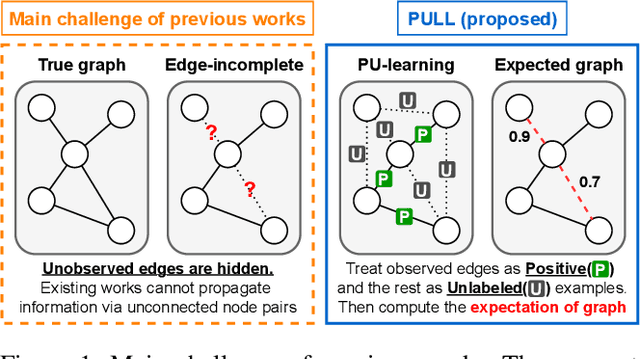



Abstract:Given an edge-incomplete graph, how can we accurately find the missing links? The link prediction in edge-incomplete graphs aims to discover the missing relations between entities when their relationships are represented as a graph. Edge-incomplete graphs are prevalent in real-world due to practical limitations, such as not checking all users when adding friends in a social network. Addressing the problem is crucial for various tasks, including recommending friends in social networks and finding references in citation networks. However, previous approaches rely heavily on the given edge-incomplete (observed) graph, making it challenging to consider the missing (unobserved) links during training. In this paper, we propose PULL (PU-Learning-based Link predictor), an accurate link prediction method based on the positive-unlabeled (PU) learning. PULL treats the observed edges in the training graph as positive examples, and the unconnected node pairs as unlabeled ones. PULL effectively prevents the link predictor from overfitting to the observed graph by proposing latent variables for every edge, and leveraging the expected graph structure with respect to the variables. Extensive experiments on five real-world datasets show that PULL consistently outperforms the baselines for predicting links in edge-incomplete graphs.
Accurate Action Recommendation for Smart Home via Two-Level Encoders and Commonsense Knowledge
Aug 12, 2022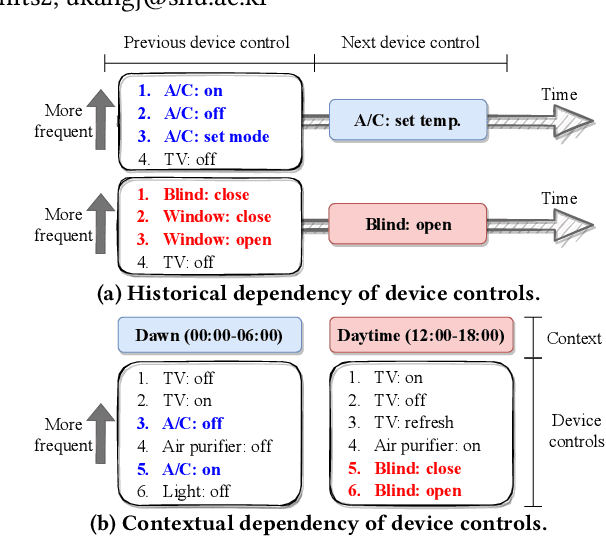
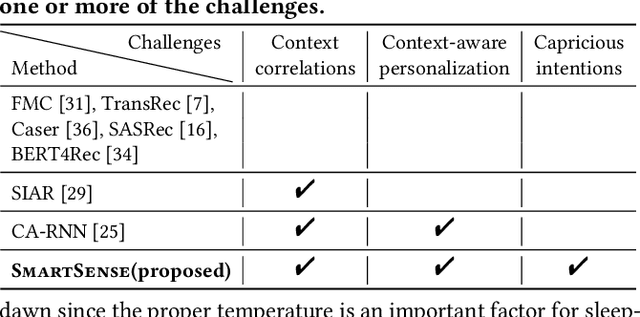
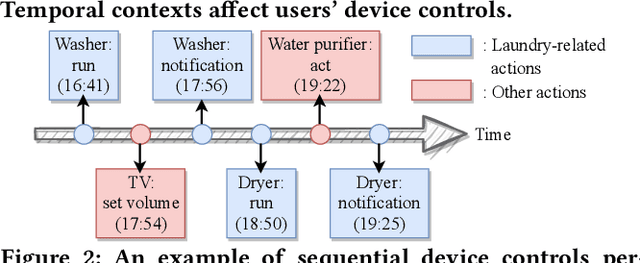
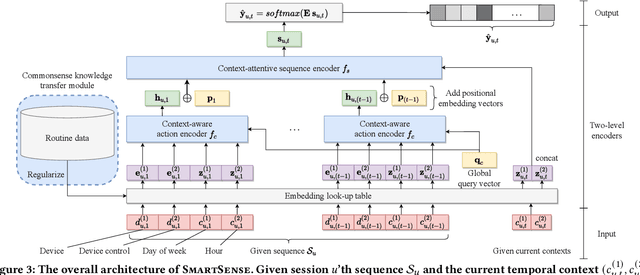
Abstract:How can we accurately recommend actions for users to control their devices at home? Action recommendation for smart home has attracted increasing attention due to its potential impact on the markets of virtual assistants and Internet of Things (IoT). However, designing an effective action recommender system for smart home is challenging because it requires handling context correlations, considering both queried contexts and previous histories of users, and dealing with capricious intentions in history. In this work, we propose SmartSense, an accurate action recommendation method for smart home. For individual action, SmartSense summarizes its device control and its temporal contexts in a self-attentive manner, to reflect the importance of the correlation between them. SmartSense then summarizes sequences of users considering queried contexts in a query-attentive manner to extract the query-related patterns from the sequential actions. SmartSense also transfers the commonsense knowledge from routine data to better handle intentions in action sequences. As a result, SmartSense addresses all three main challenges of action recommendation for smart home, and achieves the state-of-the-art performance giving up to 9.8% higher mAP@1 than the best competitor.
 Add to Chrome
Add to Chrome Add to Firefox
Add to Firefox Add to Edge
Add to Edge